第11章 THE COMMODITY(9)
Let us consider the series of equations in which the exchange-value of a commodity is expressed in concrete terms,for example --1yard of linen =2lbs.of coffee 1yard of linen =1/2lb.of tea 1yard of linen =8lbs.of bread,etc.To be sure,these equations merely denote that equal amounts of universal social labour-time are materialised in 1yard of linen,2lbs.of coffee,1/2lb.of tea,etc.But the different kinds of individual labour represented in these particular use-values,in fact,become labour in general,and in this way social labour,only by actually being exchanged for one another in quantities which are proportional to the labour-time contained in them.
Social labour-time exists in these commodities in a latent state,so to speak,and becomes evident only in the course of their exchange.The point of departure is not the labour of individuals considered as social labour,but on the contrary the particular kinds of labour of private individuals,i.e.,labour which proves that it is universal social labour only by the supersession of its original character in the exchange process.Universal social labour is consequently not a ready-made prerequisite but an emerging result.Thus a new difficulty arises:on the one hand,commodities must enter the exchange process as materialized universal labour-time,on the other hand,the labour-time of individuals becomes materialized universal labour-time only as the result of the exchange process.
It is through the alienation of its use-value,that is of its original form of existence,that every commodity has to acquire its corresponding existence as exchange-value.The commodity must therefore assume a dual form existence in the exchange process.On the other hand,its second form of existence,exchange-value,can only be represented by another commodity,for only commodities confront one another in the exchange process.How is it possible to present a particular commodity directly as materialised universal labour-time ,or --which amounts to the same thing --how can the individual labour-time materialised in a particular commodity directly assume a universal character?The concrete expression of the exchange-value of a commodity,i.e.,of any commodity considered as universal equivalent,consists of an infinite series of equations such as --1yard of linen =2lbs.of coffee 1yard of linen =1/2lb.of tea 1yard of linen =8lbs.of bread 1yard of linen =6yards of calico 1yard of linen =and so on.This is a theoretical statement since the commodity is merely regarded as a definite quantity of materialised universal labour-time.A particular commodity as a universal equivalent is transformed from a pure abstraction into a social result of the exchange process,if one simply reverses the above series of equations.For example --2lbs.of coffee =1yard of linen 1/2lb.of tea =1yard of linen 8lbs.of bread =1yard of linen 6yards of calico=1yard of linen.Just as the labour-time contained in coffee,tea,bread,calico,in short in all commodities,is expressed in terms of linen,so conversely the exchange-value of linen is reflected in all other commodities which act as its equivalents,and the labour-time materialised in linen becomes direct universal labour-time,which is equally embodied in different volumes of all other commodities.
Linen thus becomes the universal equivalent in consequence of the universal action of all other commodities in relation to it.Every commodity considered as exchange-value became a measure of the value of all other commodities.In this case,on the contrary,because the exchange-value of all commodities is measured in terms of one particular commodity,the excluded commodity becomes the adequate representation of exchange-value as the universal equivalent.On the other hand,the infinite series or the infinite number of equations in which the exchange-value of each commodity was expressed is now reduced to a single equation consisting of two terms.
The equation 2lbs.of coffee =1yard of linen is now a comprehensive expression for the exchange-value of coffee,for in this expression it appears as the direct equivalent to a definite quantity of any other commodity.
Commodities within the exchange process accordingly exist for one another,or appear to one another,as exchange-values in the form of linen.The fact that all commodities are related to one another as exchange-values!
i.e.,simply as different quantities of materialised universal labour-time,now appears in the form that all exchange-values represent merely different quantities of one and the same article,linen.Universal labour-time thus appears as a specific thing,as a commodity in addition to and apart from all other commodities.At the same time,the equation in which one commodity represents the exchange-value of another commodity,e.g.,2lbs.
of coffee =1yard of linen,has still to be realised.Only by being alienated as a use-value --an alienation which depends on whether it is able to prove in the exchange process that it is a needed object --is it really converted from the form of coffee into that of linen,thus becoming a universal equivalent and really representing exchange-value for all other commodities.